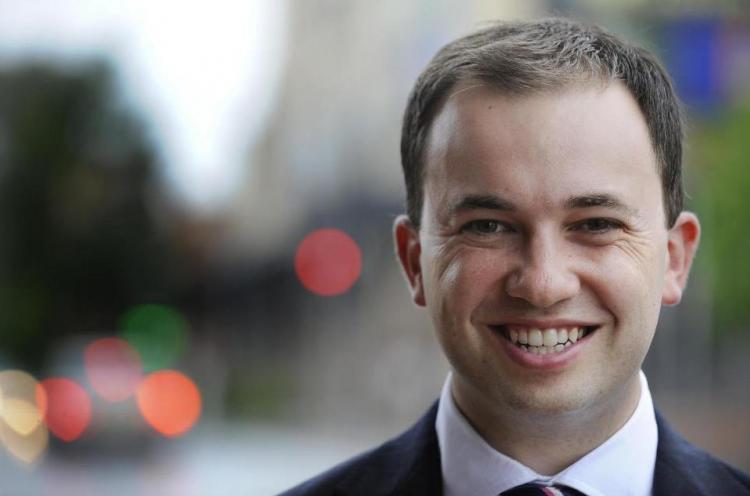
Mr MATT KEAN (Hornsby) [5.26 p.m.]: I support the Snowy Hydro Corporatisation Amendment (Snowy Advisory Committee) Bill 2013. I have a great deal of affection for the Snowy River and the Snowy Mountains Scheme. When metropolitan and rural or regional members in this place turn their minds to nation-building projects, the first thing that comes to them is the Snowy Mountains Scheme.
The Snowy Mountains Scheme was constructed from 1949 to 1974. It covers 5,000 square kilometres in southern New South Wales and has 16 major dams, seven power stations, a pumping station and 225 kilometres of tunnels, pipelines and aqueducts. It was a major project that transformed our nation. As I said, I am delighted to speak about something so iconic and Australian.
The Snowy Mountains Scheme and the Snowy River are two of the most iconic things in this country. Banjo Patterson romanticised the river in his famous poem The Man from Snowy River. It has been etched into the memories and hearts of all New South Welshmen as well as all Australians. That is why when speaking in debate on this bill I had to first acknowledge how important the river was and is to so many communities. We all want to see a healthy Snowy River.
Mr John Sidoti: That is a great point.
Mr MATT KEAN: I acknowledge the interjection. No-one wants a healthy Snowy River more than the member for Drummoyne. We must achieve that objective in a balanced way, which this bill proposes. It will recognise all interests in and users of the river. There has been some hysteria from the Opposition members and the Snowy River Alliance. In an opinion piece in the Sydney Morning Herald—everyone's favourite tabloid—Acacia Rose talks about the independence of the Snowy Scientific Committee being compromised. That is absolutely not the case. The chair of the committee will remain independent in line with the recommendations made by the oversight body.
There were some concerns that the committee would become advisory rather than independent. That is a fallacy. It will still have an independent chair and the Minister will have no influence over the advice received. This Government values independence in the governance process. We saw what happens when that independence is compromised or trashed under the former Government. We are seeing that played out in the Independent Commission Against Corruption at the moment. We are seeing what happens when a Minister steps in and overrides an independent process to trash it for everyone. We saw the former Minister for Mineral Resources, the Hon. Ian Macdonald, use his ministerial discretion and trash an independent process—some suggest to the tune of more than $200 million. That is $200 million of New South Wales taxpayers' money that is not being spent on schools, hospitals and roads. This bill will do the exact opposite. It will maintain the independence of this committee by ensuring that it has an independent chair and that the Minister does not direct what the committee does. The committee will comprise people representing a broad cross-section of stakeholders who use the river.
I point out that times have changed since the original section 57 of the legislation was incorporated into the Snowy Hydro Corporatisation Act 1997. When the Snowy Hydroelectric Scheme was corporatised in 1997, it was envisaged that there would be environmental releases into the Snowy River and other montane streams affected by the Snowy scheme. However, the size and nature of these were not known. Section 57, which deals with the Snowy Scientific Committee, reflects the situation in 1997. It was not until five years later that the Snowy Initiative was formally established and the recovery target was set. The member for Wollondilly has followed the happenings around the Snowy River with great interest. I am reminded by the member for Wollondilly that he represents the area in which the Warragamba Dam is situated. No-one knows more about these issues than the member for Wollondilly, although I suspect the member for Monaro might know as much. However, being from a metropolitan setting and a Liberal member, he knows these issues pretty well.
Under the Snowy Initiative the governments of New South Wales, Victoria and the Commonwealth committed funds and agreed to recover water through water-saving projects in the Murray and Murrumbidgee valleys. It was agreed that 212 gigalitres, or 21 per cent of the average natural flow of the Snowy River, would be recovered over 10 years and that that water would be returned to the river. The target water entitlement was achieved in July 2012. It is now 2014 and we have come a long way since then. Prior to 2010 only small volumes of water were available for release because the entitlements had not been recovered in full and because of the drought the allocations to those entitlements were low. From November 2010 significant flushing flows—the primary short-term ecological objective of the environmental flows—were released. From the time of its establishment in 2008 the Snowy Scientific Committee has provided advice on environmental releases, but the advice has in the main been adopted and has influenced the release patterns over the past few years.
I am told that for the 2013 and 2014 calendar years, on the recommendation of the New South Wales Office of Water and with the agreement of the Victorian and Commonwealth governments, a different release pattern is now being trialled. This new release pattern aims to increase the variability of flows to better reflect the hydrology of the Snowy River, provide multiple high-flow events and test the release capability of the Jindabyne Dam. All the water has now been recovered and a range of flows and pattern releases have occurred. It is therefore time for aquatic scientists, government experts, water resource managers and the community to work together to advise on a strategy for the environmental releases. The key issue is that this brings all stakeholders to the table. Everyone with an interest in the river loves the river. They have affection for the Snowy River etched on their hearts. They care about the river and want it to thrive, and this bill enables them to be part of that process. The member for Drummoyne touched on this very eloquently when he said that the Snowy River is everyone's river and we all have a role to play in protecting this amenity and the character of this much loved Australian treasure.
